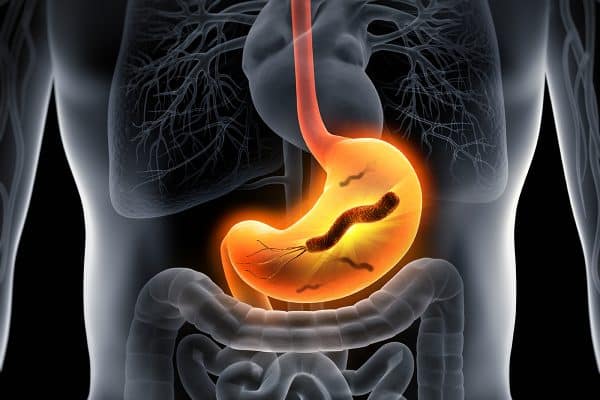- Overview
The “Overview” series puts different kinds of research in the spotlight and takes an informed look at current events.

No less than 45% of Canadian men—almost one in two!—will develop cancer in their lifetime, according to the Canadian Cancer Statistics.
For Professor Marie-Élise Parent, a researcher at the Institut national de la recherche scientifique (INRS), prevention is the best weapon against this deadly disease.
This internationally renowned epidemiologist has devoted her research activities to determining whether lifestyle, environment, and genetics play a part in the causes of cancer, and particularly prostate cancer, which is the most common type among Canadian men.
Her involvement in various scientific committees and her role as advisor to international organizations, including the Scientific Council of the World Health Organization’s (WHO) International Agency for Research on Cancer (IARC)—where she is the sole Canadian scientist—testify to her decisive influence and expertise in shaping global cancer research.
Professor Parent also holds a Canada Research Chair in Environmental Epidemiology of Cancer, which aims to provide groundbreaking data on the role of the environment in the development of prostate cancer, and to devise effective population-based cancer prevention strategies.
We sat down to talk with this highly qualified epidemiologist who tracks cancer on a global scale.
Why did you decide to devote your research to prostate cancer?
Prostate cancer is currently one of the four most common cancers in Canada, and also the most common among Canadian men, accounting for 21.9% of male cancer diagnoses in 2024 (source: Canadian Cancer Society).
In 1990, when my thesis supervisor offered me two projects—one on breast cancer, the other on prostate cancer—I chose the former. At the time, it seemed bit strange to be interested in prostate cancer, especially as a woman. Few men talked about it openly, probably because of the side effects of treatment, which made the subject very personal.
Fortunately, times have changed, and we are now more aware of both the problem and the lack of dedicated funding for prevention research. Once I reached the post-doctoral level, I had to find an innovative theme to launch my academic research program. As I searched the literature, I realized that virtually nothing was known about the risk factors for prostate cancer. It was a real black hole. That’s all it took to pique my curiosity as a young researcher.
Prevention plays a key role in the fight against cancer. What risk factors is your research focusing on?
One long-standing, yet intriguing, observation is that farmers are at increased risk of developing prostate cancer even though they are less likely to develop most other cancers and diseases. This has led several research teams to look at the role of pesticides as part of their studies on farmers. However, virtually no other large-scale research has focused on other chemical exposures in the environment. If some pesticides are a problem, other chemical agents certainly are! And yet, this has never been explored in depth. I therefore decided to devote my career to identifying other chemical and physical agents, both in the workplace and in the general environment, that increase the risk of this cancer. I have my work cut out for me, because there are thousands of environmental exposures out there!
When researchers are studying the impact of chemical exposures on health, they often start with the workplace. It is an excellent setting for studies, as there are frequently high levels of chemical agents, making them easier to measure. This often makes workplaces a sort of canary in the coal mine, giving the first signs that a chemical agent is hazardous to health. In fact, almost of all the chemical agents that are currently classified as carcinogens were first studied in groups of workers. What’s more, these observations are often relevant on a larger scale as well, as many workplace chemicals are also found in the larger environment and put the general population at risk. This is the case with asbestos, for example, which was first studied and declared carcinogenic because of studies on workers in asbestos mines. We now know that asbestos can be found in the air around mines and in houses that are being renovated. Another example is diesel emissions, found at high levels in diesel machinery operators and firefighters. These emissions also affect the entire population, which is exposed to them in urban environments.
Our research therefore focuses on many potentially carcinogenic agents that can cause chronic inflammation or influence hormone levels in men, as the prostate is regulated by hormones. These include emissions from vehicles, solvents, metals, welding fumes, and much more.
We are also looking at night shifts, which disrupt circadian cycles, as well as air pollution and nighttime light pollution. Finally, we are studying the role of numerous lifestyle factors and contributing to collaborative activities on genetic factors.
The results of your research represent major advances in the field. Can you tell us more?
Our team is the only one in the world to devote its research almost exclusively to studying the role of chemical agents other than pesticides in prostate cancer. As a result, our work is frequently a reference in the field.
Prior to this, the lack of evidence on the subject had led to the general assumption that the development of prostate cancer was not strongly linked to the environment. Our research results therefore lead to a paradigm shift, as they highlight the role that several workplace or general exposures play in the origins of this type of cancer.
Our results are also built on state-of-the-art methodologies and are systematically used by the International Agency for Research on Cancer, a component of the World Health Organization, as well as by the National Toxicology Program in the USA, when classifying agents according to their carcinogenicity. These classifications serve as a reference for health authorities and the public, as well as a scientific basis to support actions aimed at controlling exposure and thus preventing cancer in the population. Our observations represent major advances by highlighting the role of environmental exposures, as well as disadvantage and social isolation, in prostate cancer risk. They identify at-risk populations and support the implementation of preventive strategies for the most common cancer among Canadian men.



